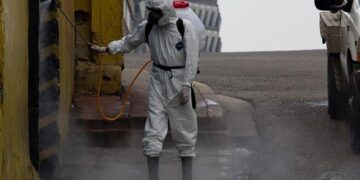The Dismissal and Reinstatement of National Nuclear Security Administration Staff: Understanding Their Roles
Introduction to the Controversy
In a surprising turn of events, reports surfaced detailing the abrupt termination and subsequent reinstatement of employees at the National Nuclear Security Administration (NNSA) during Donald Trump’s presidency. This incident raises important questions about the roles these individuals played within an organization crucial for national safety.
The Significance of NNSA
The NNSA is a key component of the U.S. Department of Energy, primarily charged with ensuring both nuclear security and facilitating arms control. This agency plays a vital role in managing America’s nuclear stockpile and advancing non-proliferation efforts globally. Given its responsibilities, personnel stability within this organization is paramount.
A Closer Look at Job Functions
The team members affected by this administrative shuffle performed various essential functions:
- Nuclear Weapons Stewardship: Many employees engaged in the oversight and maintenance of nuclear armaments to ensure they meet stringent safety protocols.
- Securing Facilities: Personnel were involved in safeguarding facilities housing nuclear materials, providing critical support against both physical and cyber threats.
- Research and Development: Some staff focused on advancing technologies related to weaponry while also supporting innovations aimed at reducing reliance on such arsenals.
- Policy Development: Specific roles included creating frameworks for effective governance over nuclear resources—balancing diplomatic efforts alongside safeguarding operational integrity.
Unpacking the Dismissals
Trump’s controversial dismissal decision caught many by surprise, sparking debate over its motivations linked to broader political dynamics during his term in office. Public criticism quickly followed as concerns arose regarding national security implications tied to sudden personnel changes at an agency so fundamental to U.S defense strategies.
Further analysis suggests that this swift jettisoning raised alarms amongst experts who emphasized that maintaining experienced staff is critical amid global uncertainties concerning nuclear capabilities among nations.
The Aftermath: Restoration or Continued Risk?
Following public outcry and legislative scrutiny, those employees were reinstated; however, lingering apprehensions remain regarding job stability within federal agencies under shifting political winds. Trust building within these vital organizations necessitates ongoing discussions around employee treatment—the commitment towards operational efficacy cannot be overstated given current geopolitical tensions underscored by recent statistics indicating heightened threats from state-sponsored actors with access to advanced warfare technologies.
Moreover, international observances note escalating investments into defense mechanisms globally—serving as further validation for properly equipping agencies like NNSA with dedicated leadership unmarred by political frictions.
Conclusion
The incident involving high-profile suspensions at the NNSA stands as a significant reminder about governance challenges faced across federal departments during transitional leadership periods; it underscores our collective responsibility to prioritize national security through stability among personnel valued for their expertise – particularly when tasked with managing some facets of America’s most sensitive assets.































